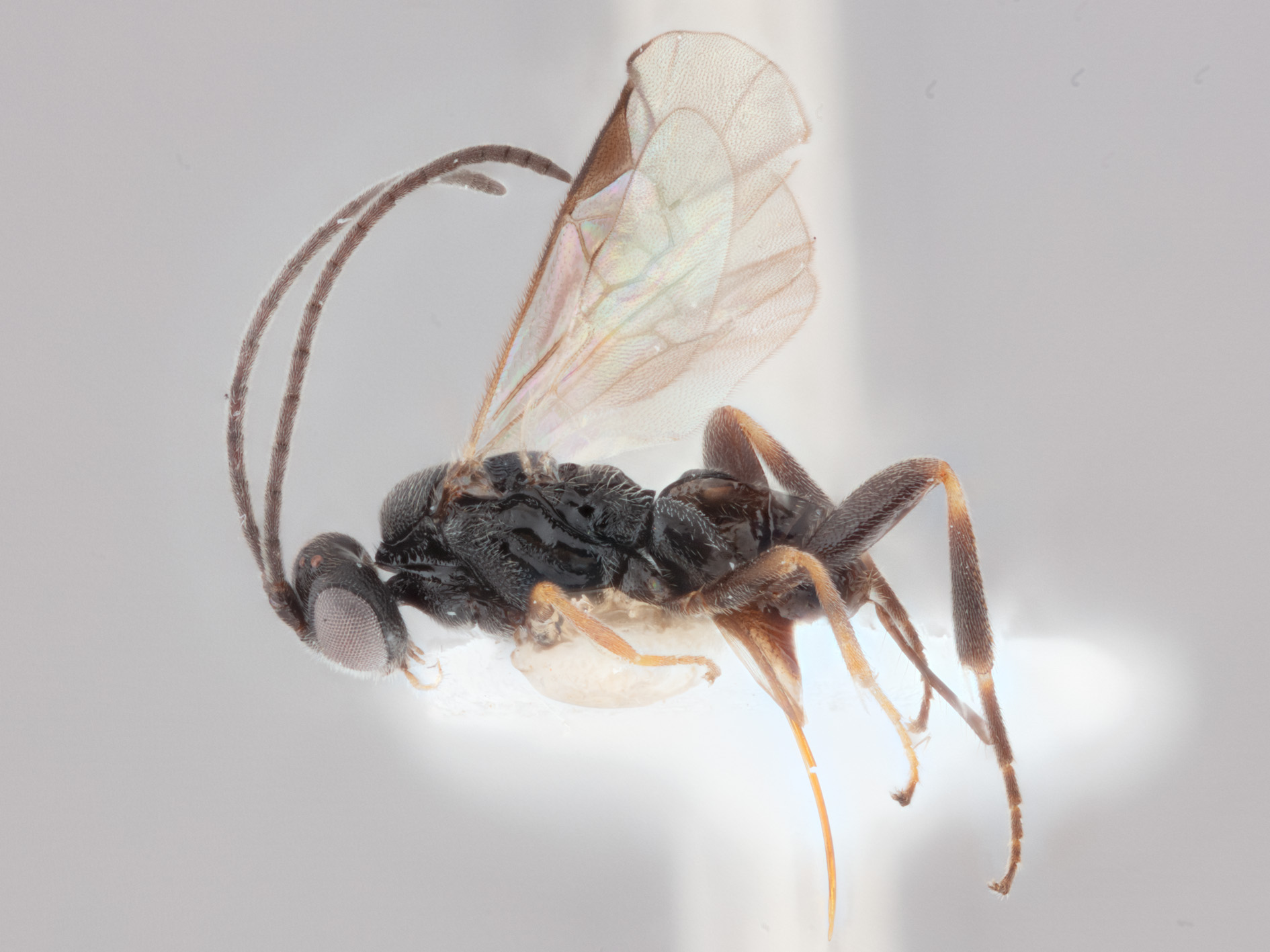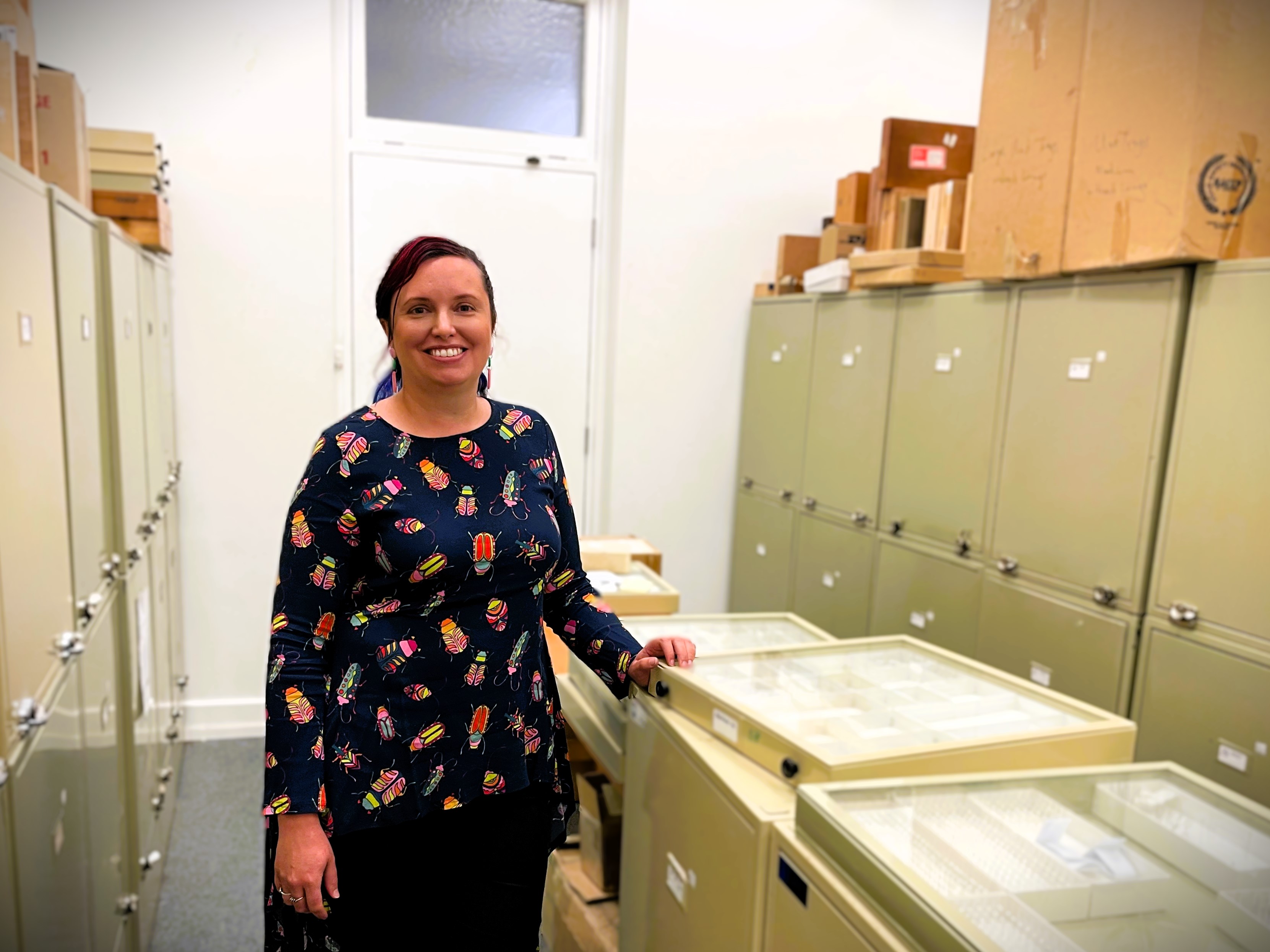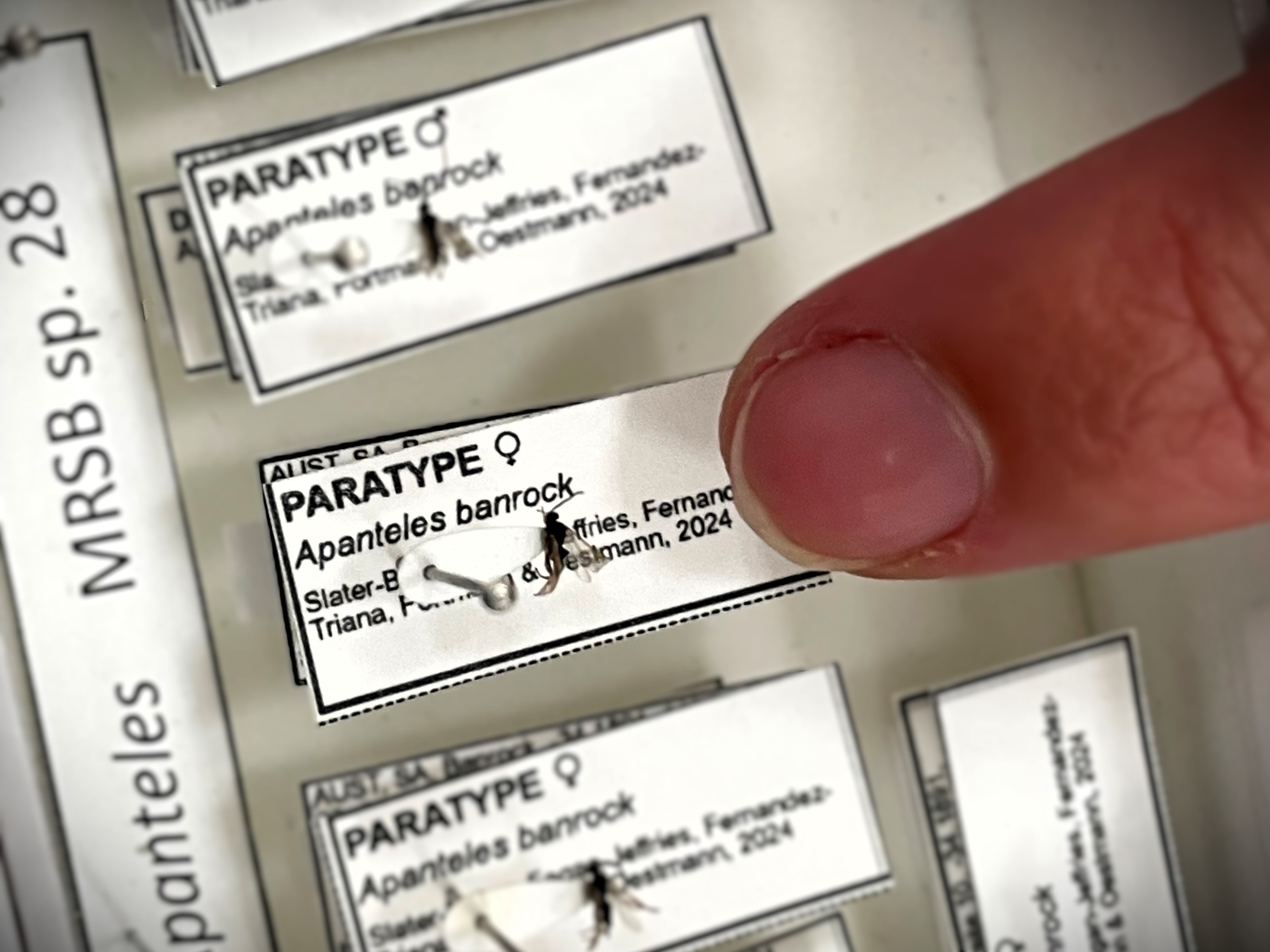
It probably wasn’t very surprising in the end.
Offer some school students an opportunity to name a new species of tiny black parasitoid wasp, and they come up with … darthvaderi.
“They said it came from the Dark Side,” entomologist Erinn Fagan-Jeffries said of the Star Wars inspired nomenclature, as we celebrate World Wasp Day (24 September).

Dr Fagan-Jeffries, who is an honorary researcher with the South Australian Museum and the Wasp Biodiversity Group leader at the University of Adelaide, said fortunately not all the new wasp names were so – to quote the Dark Lord himself – disturbing.
“The Streaky Bay Area school in South Australia named theirs sinusulus, which means little bay,” she said. “Another school named theirs alatomicans, which means twinkling wings.”
Not that the wings are easy to see.
The 34 Australian wasps newly described by Dr Fagan-Jeffries and her colleagues in the Wasp Biodiversity Group are tiny, measuring just a few millimetres in length.

But they are deadly, if you’re a caterpillar.
“They lay their eggs in caterpillars,” she said. “So, I guess it has a bit of a gross element to it.
“The larvae live in the caterpillar, slowly eating its flesh as the caterpillar goes about its day. We may think it’s icky, but they’re really important in controlling caterpillar populations.
“Caterpillars can do a lot of damage in agricultural environments and it’s also important that they don’t get out of control in natural ecosystems, so entomologists like me think wasps are beautiful, and not icky at all.”
All the newly described wasps come from the poorly studied Apanteles genus – the group had not been studied in any detail in Australia for more than 30 years. Only 12 species were previously described, and one of those was introduced to control potato tuber moth in the 1960s.
The Wasp Biodiversity Group used wasps stored in the South Australian Museum’s Terrestrial Invertebrate Collection.
They also collected hundreds of specimens from around the country with the help of the Bush Blitz surveys and the schools program Insect Investigators – hence all the cool names.
The research team used DNA technology and old school visual taxonomy to identify each of the newly described species.
All up, researchers believe there are probably 150 Australian species of Apanteles.
“There’s still a lot of work still to do,” Dr Fagan-Jeffries said, “and this is just one genus of one sub-family of one family of wasps.
“There are thousands of native wasps out there waiting for names.”
You can read the full research paper here.